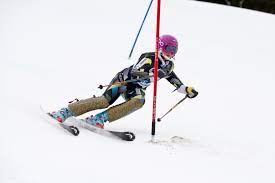Skiing is a popular winter sport that involves gliding down snow-covered slopes on skis, which are long, narrow boards that are strapped to the feet. Skis are typically made of wood, plastic, or composite materials and have metal edges to help with turning and stopping.
Skiing can be done at various skill levels, from beginners to experts. There are several different types of skiing, including alpine skiing (also known as downhill skiing), which involves skiing down steep slopes or through a course of gates, and cross-country skiing, which involves skiing across flat or gently rolling terrain.
In addition to skis, skiing requires specialized equipment such as boots, bindings, and poles. Skiers typically wear warm, waterproof clothing to protect themselves from the cold and snow, as well as helmets and goggles to protect their heads and eyes.
Skiing can be a fun and exciting way to enjoy the winter months and stay active. It can also be a competitive sport, with events such as the Winter Olympics featuring skiing competitions. However, it is important to be aware of the risks involved in skiing and to take appropriate safety precautions to avoid injury.

Equipment:
To ski, you need a few essential pieces of equipment, including skis, boots, bindings, and poles. Skis come in different lengths and widths, depending on the type of skiing you plan to do. Ski boots are designed to keep your feet warm and secure in your bindings, which attach your boots to your skis. Ski poles are used to help with balance and turning.
Types of skiing:
There are several different types of skiing, each with its style and techniques. Alpine skiing, also known as downhill skiing, involves skiing downhill on groomed trails or slopes. Nordic skiing, on the other hand, includes cross-country skiing, ski jumping, and biathlon. Freestyle skiing includes mogul skiing, aerial skiing, and ski cross, and is known for its acrobatic tricks and jumps.
Skiing technique:
Skiing requires a combination of balance, coordination, and strength. Basic skiing technique involves shifting your weight from one ski to the other, controlling your speed with your edges, and using your poles to help with balance and turns. More advanced skiers can learn to carve turns, ski moguls, and navigate more challenging terrain.
Safety:
Skiing can be a fun and thrilling activity, but it’s important to take safety precautions to prevent injury. Always wear a helmet and appropriate clothing for the weather conditions. Make sure you’re skiing on slopes that are appropriate for your skill level, and pay attention to posted signs and warnings. Always ski with a partner or group, and be aware of other skiers around you.
Locations:
Skiing can be enjoyed in many locations around the world, from small local ski hills to large mountain resorts. Some popular skiing destinations include the Alps in Europe, the Rocky Mountains in North America, and the Japanese Alps in Asia.
Season:
Skiing typically takes place during the winter months, from December to March in the Northern Hemisphere, and from June to September in the Southern Hemisphere. However, some high-altitude resorts may have skiing opportunities throughout the year.
Benefits:
Skiing is a great form of exercise that can provide many health benefits. It can help improve cardiovascular health, build leg and core strength, and increase overall endurance. Additionally, skiing can be a fun social activity that can help relieve stress and improve mental health.
Skiing culture:
Skiing has a rich history and culture, with many traditions and customs. Après-ski, or socializing and relaxing after a day of skiing, is a popular tradition in many ski towns. Ski racing is also a popular competitive sport, with events like the Olympics and World Cup drawing top athletes from around the world.
Accessibility:
While skiing can be an expensive sport, there are many programs and initiatives aimed at making it more accessible to a wider audience. Some ski resorts offer discounted rates for beginners or have adaptive programs for skiers with disabilities. Additionally, there are many community ski clubs and programs that offer affordable skiing opportunities.
In conclusion,
Skiing is a popular winter sport that involves sliding down snow-covered hills or mountains on a pair of skis. There are several types of skiing, including alpine skiing, Nordic skiing, and freestyle skiing, each with its style and techniques. Skiing requires a combination of balance, coordination, and strength, and can provide many health benefits. Skiing can be enjoyed in many locations around the world and has a rich history and culture. While it can be an expensive sport, there are many programs and initiatives aimed at making it more accessible to a wider audience. Whether you’re a beginner or an experienced skier, skiing can be a fun and exhilarating activity that allows you to explore the beautiful winter landscape and enjoy the company of others.
